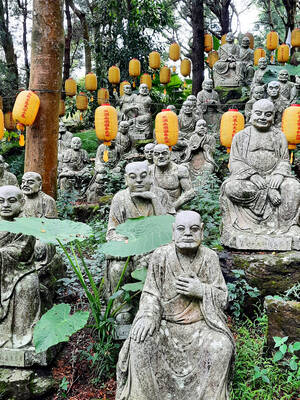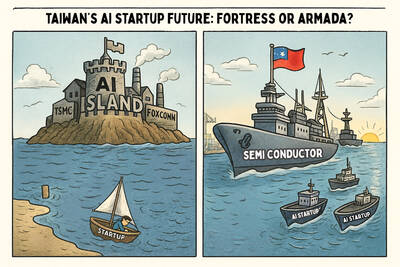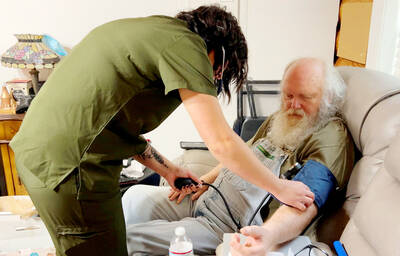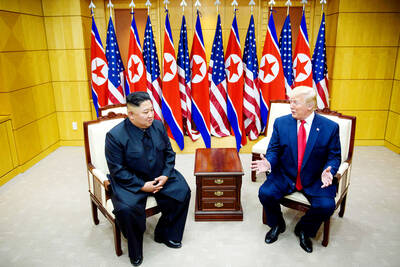Gianfranco Ferre, the Italian fashion designer noted for a consistently singular vision in his signature ready-to-wear collection and for opening the doors of French haute couture to foreign-born designers, died Sunday night in Milan. He was 62.
After suffering a brain hemorrhage on Friday, Ferre had been admitted to the San Raffaele hospital, where doctors confirmed his death, the Italian news agency ANSA reported.
Ferre was one of the biggest names in Italian fashion during the 1980s and 1990s, known for his masculine-looking suits and austere gowns that often caused fashion show audiences to marvel over their elaborate construction. He placed a visible emphasis on the seams of his garments, a signature rooted in his early training not as a designer, but as an architect.
He was also well known for including variations of white dress shirts in his collections, manipulated with enlarged, theatrical cuffs or superfluous details like multiple collars - a signature that would later influence contemporary designers like the Dutch duo Viktor & Rolf.
Imposing, with a full beard and a self-regarding air, he was a challenging figure whose refusal to adapt to trendy designs or changes in fashion often put him at odds with his peers and the press. This was a trait captured in passing in the 1994 Robert Altman film Pret-a-Porter, which featured Ferre as he presented his fall Dior collection to an audience that included Sophia Loren and Marcello Mastroianni - amid notable intrusions by the director, infuriating many editors who were there. (The designers Valentino and Karl Lagerfeld promptly banned Altman's cameras because, they predicted correctly, his satirical look at the fashion industry would not make them come off very well.)
Ferre's obvious pleasure in personal indulgences, however, delighted many of his admirers, who often noted that his love of excess in design was also reflected in his waistline.
"He never gave up what he thought of as style, in his own way," said Franca Sozzani, the editor in chief of Italian Vogue. "He has never been an easy designer, or one who was trying to please the press. In his mind there was a certain ideal kind of woman, different than the women we see in magazines or on runways - not a trendy woman but a real woman."
Gianfranco Ferre was born Aug. 15, 1944, in Milan, Italy. He studied architecture at the Milan Polytechnic Institute, but after graduating in 1969, he began designing accessories for established companies like Walter Albini and Christiane Bailly. In 1974, he started his own fashion company, designing for other labels before beginning a signature collection four years later. He quickly added to his women's and men's lines with lower-priced fashion lines and licensed products that were less expensive and more widely distributed, exposing his name to an international audience.
In 1987, Ferre was hired by the French luxury-goods executive Bernard Arnault to replace the designer Marc Bohan at Christian Dior, a rare invitation for a designer living outside Paris to become the stylistic director for one of the most famous fashion houses in France.
Although the makeup of creative talent behind the remaining couture houses today reflects a broader globalization of fashion, including designers from England, the United States and Germany, Ferre's appointment was considered scandalous at the time, prompting an outcry from Yves Saint Laurent's business partner, Pierre Berge, who said, "I don't think that opening the doors to a foreigner - and an Italian - is respecting the spirit of creativity in France."
Ferre was not entirely lauded for his couture collections, which he designed for nearly a decade in Paris while continuing his signature lines in Milan. His Italian style did not jibe easily with the French sense of glamour and restrained elegance. But he did charm some customers - women like Nan Kempner, Bernadette Chirac and Claude Pompidou - with a return to the nipped-waist silhouette made famous by Christian Dior. After several years, Ferre had established a respectable business at Dior, causing its couture to grow in size and prestige comparable to that of Saint Laurent.
"Back then, the fact that I was Italian created lots of problems," Ferre told Women's Wear Daily in an interview in February. "Luckily, though, my French wasn't that bad."

When Taiwan was battered by storms this summer, the only crumb of comfort I could take was knowing that some advice I’d drafted several weeks earlier had been correct. Regarding the Southern Cross-Island Highway (南橫公路), a spectacular high-elevation route connecting Taiwan’s southwest with the country’s southeast, I’d written: “The precarious existence of this road cannot be overstated; those hoping to drive or ride all the way across should have a backup plan.” As this article was going to press, the middle section of the highway, between Meishankou (梅山口) in Kaohsiung and Siangyang (向陽) in Taitung County, was still closed to outsiders

President William Lai (賴清德) has championed Taiwan as an “AI Island” — an artificial intelligence (AI) hub powering the global tech economy. But without major shifts in talent, funding and strategic direction, this vision risks becoming a static fortress: indispensable, yet immobile and vulnerable. It’s time to reframe Taiwan’s ambition. Time to move from a resource-rich AI island to an AI Armada. Why change metaphors? Because choosing the right metaphor shapes both understanding and strategy. The “AI Island” frames our national ambition as a static fortress that, while valuable, is still vulnerable and reactive. Shifting our metaphor to an “AI Armada”

The older you get, and the more obsessed with your health, the more it feels as if life comes down to numbers: how many more years you can expect; your lean body mass; your percentage of visceral fat; how dense your bones are; how many kilos you can squat; how long you can deadhang; how often you still do it; your levels of LDL and HDL cholesterol; your resting heart rate; your overnight blood oxygen level; how quickly you can run; how many steps you do in a day; how many hours you sleep; how fast you are shrinking; how

US President Donald Trump may have hoped for an impromptu talk with his old friend Kim Jong-un during a recent trip to Asia, but analysts say the increasingly emboldened North Korean despot had few good reasons to join the photo-op. Trump sent repeated overtures to Kim during his barnstorming tour of Asia, saying he was “100 percent” open to a meeting and even bucking decades of US policy by conceding that North Korea was “sort of a nuclear power.” But Pyongyang kept mum on the invitation, instead firing off missiles and sending its foreign minister to Russia and Belarus, with whom it